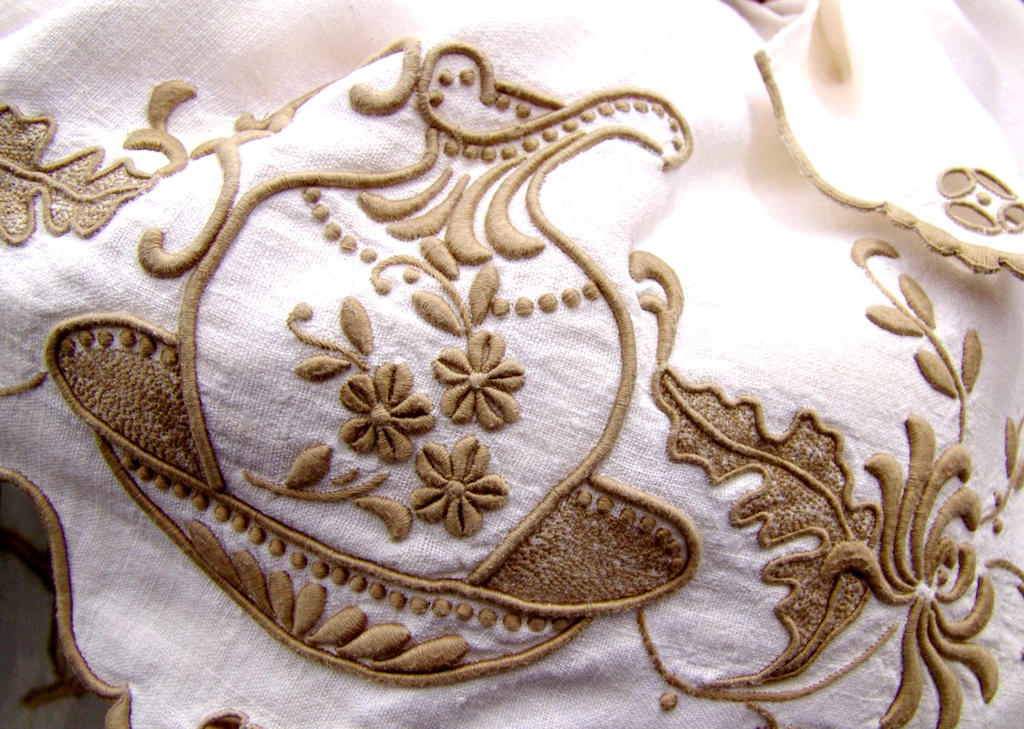Rooted in History:
Embroidery has a long history in Portugal, dating back to the 13th century when it was introduced by Arab influences. Over the centuries, Portuguese embroiderers refined their techniques and incorporated elements from various cultures, including Moorish, Renaissance, and Baroque styles. The art flourished, and each region developed its own unique embroidery traditions.Regional Variations:
Portugal's diverse geography and cultural heritage have given rise to distinctive regional embroidery styles. The Minho region is known for its delicate and colorful "Lenços dos Namorados" (Sweetheart Handkerchiefs), featuring love poems and symbols. The Azores Islands boast vibrant floral patterns on their traditional "Bordado de Casa" (House Embroidery). The Madeira Islands are renowned for their exquisite "Richelieu" embroidery, characterized by intricate cutwork and white-on-white designs.Techniques and Motifs:
Portuguese embroidery encompasses a wide range of techniques, including surface embroidery, drawn thread work, whitework, and appliqué. Skilled artisans employ stitches such as satin stitch, stem stitch, bullion stitch, and French knots to create intricate patterns and textures. Traditional motifs often draw inspiration from nature, featuring flowers, birds, and geometric patterns, while religious and cultural symbols also play a significant role.Lisbon.vip Recommends
Contemporary Adaptations:
While traditional Portuguese embroidery remains treasured, contemporary artists and designers are reimagining the craft, blending it with modern aesthetics. They experiment with new color palettes, incorporate different fabrics, and explore innovative stitches, breathing new life into this ancient art form. The fusion of traditional and contemporary elements ensures that Portuguese embroidery continues to evolve and stay relevant in today's world.Preserving a Heritage:
Efforts are being made to safeguard and promote Portuguese embroidery. Artisans, schools, and cultural organizations collaborate to pass down the skills and knowledge to future generations. Festivals, exhibitions, and workshops celebrate the craft, raising awareness and appreciation for its beauty and significance. The intricate stitches and vivid colors of Portuguese embroidery continue to adorn clothing, home furnishings, and accessories, reflecting the country's cultural identity and connecting past and present.In conclusion, Portuguese embroidery is a testament to the artistic expression and cultural richness of the country. Its intricate designs, skilled craftsmanship, and regional variations make it a cherished part of Portugal's heritage. Whether embracing traditional motifs or embracing contemporary adaptations, Portuguese embroidery continues to inspire and captivate, preserving a legacy of creativity, tradition, and artistry.



